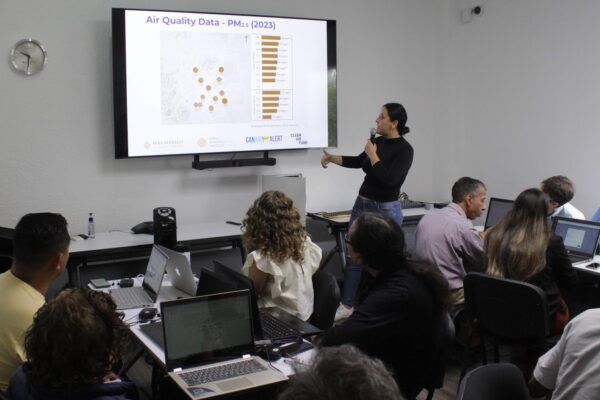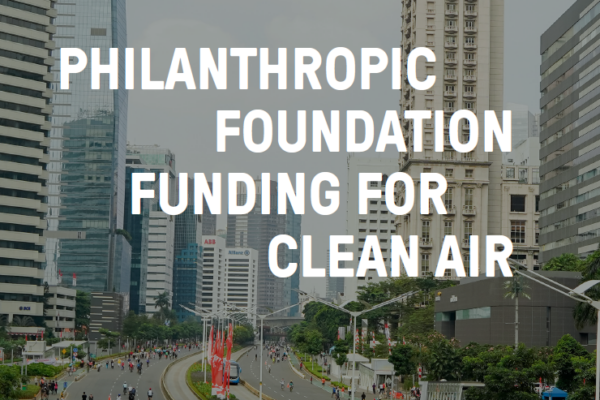By many gauges, Southeast Asia (SEA) is on the frontline of climate change and the health impacts it is predicted to exacerbate. Over 600 million people are at risk of increasing heat, rising sea levels and extreme weather events, which will also affect disease patterns, food and water insecurity, and strained health systems.
As the region is already experiencing some effects of a changing climate, countries are prioritising adaptation and resilience measures. But many of these actions overlook the vital need to tackle air pollution as part of building environmental, health and economic resilience.
Improving air quality can also accelerate and reinforce climate and health adaptation strategies. Air quality should be considered as part of SEA countries’ plans to improve climate and public health.
We have identified three measures countries in SEA have begun or can replicate to reduce air pollution and support an agenda of adaptation and resilience:
1. Clean transportation
Transport is a major air pollution source for many major cities in SEA. While reducing emissions remains crucial to support climate and health improvements, adaptation measures can reduce the impact of transport-related pollution. Effective adaptation of transport supports communities’ health, safety and resilience, while mitigating climate impacts, improving air quality and strengthening local economies.
Manila is embracing green transportation with electric motorbikes and bicycles, while existing ‘jeepneys’ (public transport vehicles) are being converted into electric vehicles. Bangkok is introducing electric boats for water travel and encouraging student bike usage to promote environmental awareness on campus. Jakarta is focusing on designated bike lanes and the extensive use of rapid train and bus transit systems, providing lower-cost and greener options for transportation.
These approaches can be replicated in other major cities across SEA, although sources for electric energy must be carefully considered.
2. Air quality early warning systems
Poor air quality is often exacerbated by a lack of reliable data that can provide alerts to help people avoid the worst air pollution. Tools exist to help solve this problem and can be adopted across SEA cities.
Clean Air Fund has been working with World Resources Institute’s Ross Center for Sustainable Cities to establish CanAIRy Alert, which provides reliable and accessible air quality data to resource-constrained cities.
CanAIRy Alert equips urban air quality practitioners from the Global South with forecasting and analytical tools to better understand sources of local air pollution. By adapting these tools to their context, cities can provide warnings to the public ahead of peak pollution events, which will help residents reduce their exposure. Following a successful roll-out in several cities globally, CanAIRy is being implemented in SEA, including Jakarta, to support air quality forecasting and response.
3. Air pollution clinics
In 2023, 10 million people in Thailand sought treatment for pollution-related illnesses. Bangkok often experiences some of the worst air quality in the country, which is responsible for over 5,000 premature deaths a year and significant losses to the city’s economy.
In response, the city’s Health Department set up air pollution clinics to offer treatment to people suffering respiratory illness during extended periods of poor air quality and Bangkok’s smog season. The clinics also help educate communities about the health risks of air pollution and how best to limit their exposure. Air pollution clinics are replicable, with one recently launched in London that specialises in supporting children with asthma.
These types of interventions must be implemented in conjunction with pollution reduction measures. Governments need to ensure they treat the root causes of pollution-related illness, not just the symptoms.
How can philanthropy support these measures?
Philanthropic support can play a key role in supporting these measures and other adaptation efforts. Philanthropic funders can:
- Test solutions via feasibility pilots, which builds evidence of what works and supports adoption at a larger scale.
- Advocate for ‘what works’ by targeting policymakers and other key stakeholders to secure political support and mobilise the finance needed.
- Support local campaigns and movements that have climate and health goals at their core.
- Help to build knowledge-sharing networks and platforms that can reach across and beyond the SEA region.
- Target other major emitting sectors, such as waste and agriculture to support relevant adaptation measures.
These actions shouldn’t be taken in isolation. For lasting impact, philanthropy should also prioritise collaboration with other funders, governments and financial institutions that have shared interests to help strengthen climate and health strategies across the region. Get more recommendations for philanthropic funders.
See more

Helping cities in the global south to strengthen air quality forecasting and management
